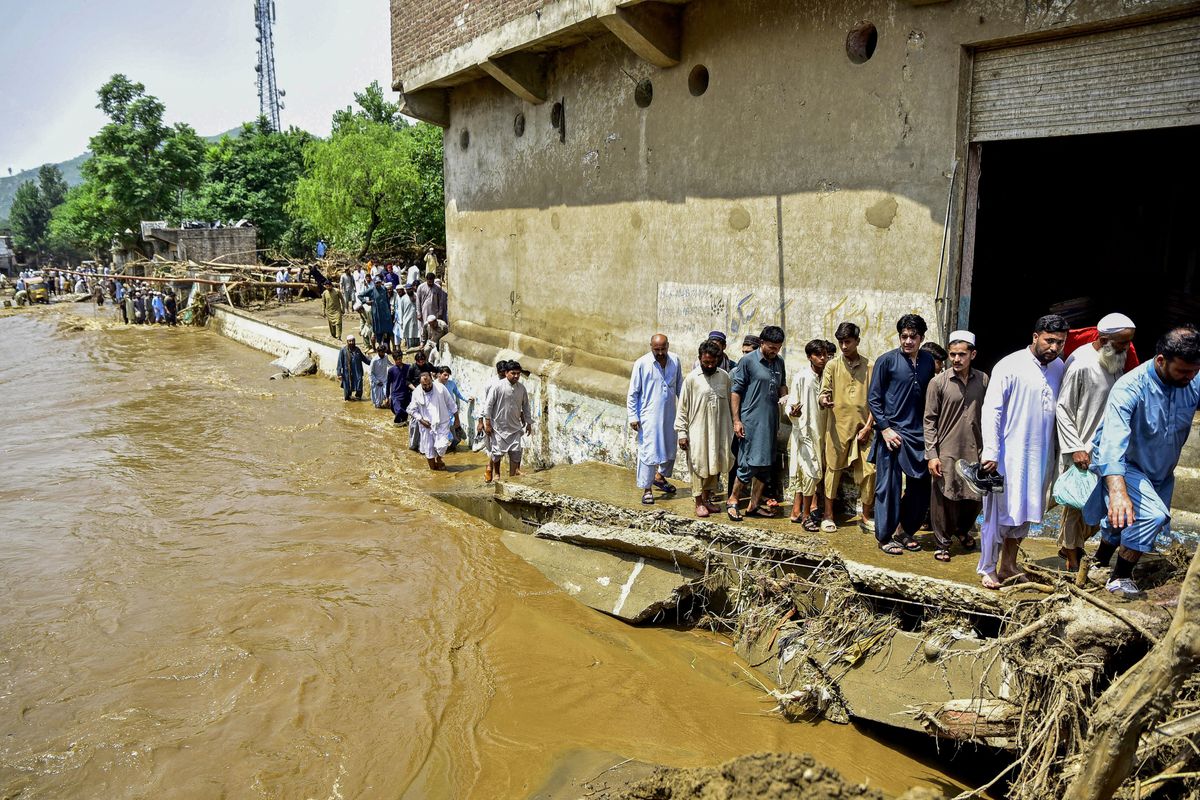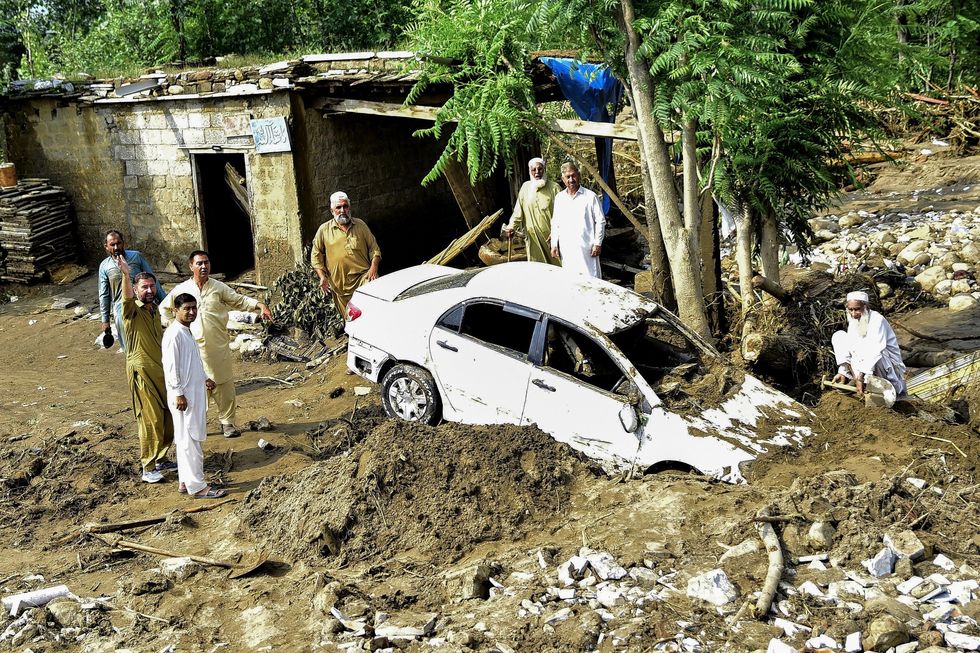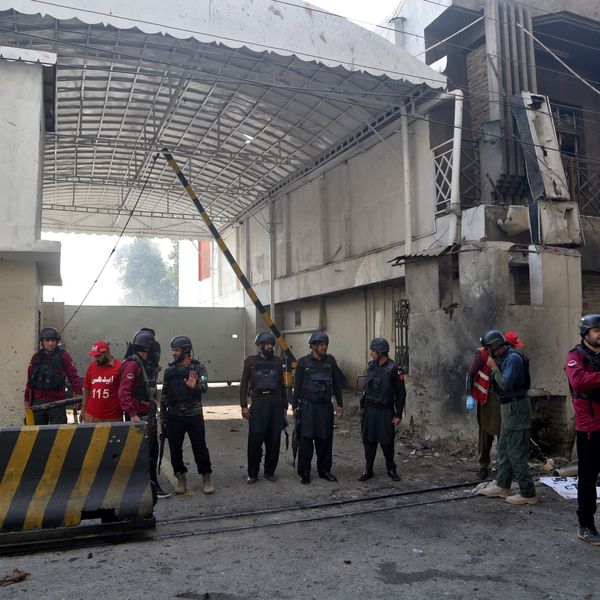Death toll from flash floods in northern Pakistan rises to 337
Buner is worst hit with 209 deaths, while GB, Kashmir, Swat and Malakand have also been declared disaster zones as rescue efforts continue
Kamran Ali
Correspondent Nukta
Kamran Ali, a seasoned journalist from Khyber Pakhtunkhwa, Pakistan, has a decade of experience covering terrorism, human rights, politics, economy, climate change, culture, and sports. With an MS in Media Studies, he has worked across print, radio, TV, and digital media, producing investigative reports and co-hosting shows that highlight critical issues.

Residents walk alongside a stream a day after flash floods in the Buner district of the monsoon-hit northern Pakistan's mountainous Khyber Pakhtunkhwa province on August 16, 2025.
AFP
At least 337 people have been killed in flash floods and landslides across northern Pakistan, officials said Saturday, as relentless monsoon rains batter Khyber Pakhtunkhwa (KP), Gilgit-Baltistan, and Pakistan-administered Kashmir.
Buner district has been the worst hit, with 209 fatalities, Deputy Commissioner Kashif Qayum confirmed to Nukta.
The floods swept through the region in the early hours of Friday, destroying homes and triggering widespread devastation. Many of the victims were women and children, and officials warned the toll could rise further. Most of the destruction occurred within just 36 hours of the deluge.
- YouTube www.youtube.com
According to the Provincial Disaster Management Authority (PDMA), other casualties included 36 in Shangla, 23 in Mansehra, 22 in Swat, 21 in Bajaur, 15 in Battagram, five in Lower Dir, and one in Abbottabad. At least 146 others have been injured.
Among the victims were five provincial government officials who died when a helicopter carrying relief supplies crashed in Bajaur due to bad weather.
Authorities have declared several districts disaster zones, including Buner, Bajaur, Swat, Shangla, Mansehra and Battagram, where damaged infrastructure has severely hampered relief operations. Chief Minister Ali Amin Gandapur announced a day of mourning, hailing the victims as “true heroes whose sacrifice will be written in golden letters in history.”
- YouTube www.youtube.com
Rescue and relief efforts are under way, with more than 4,000 people affected and 3,567 rescued so far. Nearly 5,000 personnel supported by 90 vehicles - including ambulances and excavators - are engaged in operations, while officials report 68 houses damaged or destroyed.
Large parts of Gilgit-Baltistan, Pakistan-administered Kashmir, Swat and Malakand have also been declared disaster-hit, with floods and landslides blocking major roads and delaying aid deliveries. Officials warned that the toll is likely to rise further as dozens remain missing.

The crisis comes amid what authorities describe as an “unusual” monsoon. Pakistan has already recorded more than 650 flood-related deaths nationwide this summer, with over 905 injured.
In July, Punjab - home to nearly half of Pakistan’s 255 million people - saw 73% more rainfall than last year and more fatalities than in the entire previous monsoon season.
Monsoon rains bring South Asia about three-quarters of its annual rainfall, vital for agriculture and food security, but also unleash devastation between June and September.
Pakistan remains among the world’s most climate-vulnerable nations, confronting extreme weather with growing frequency. In 2022, catastrophic monsoon floods submerged a third of the country and killed around 1,700 people, underscoring the scale of the challenge.










Comments
See what people are discussing